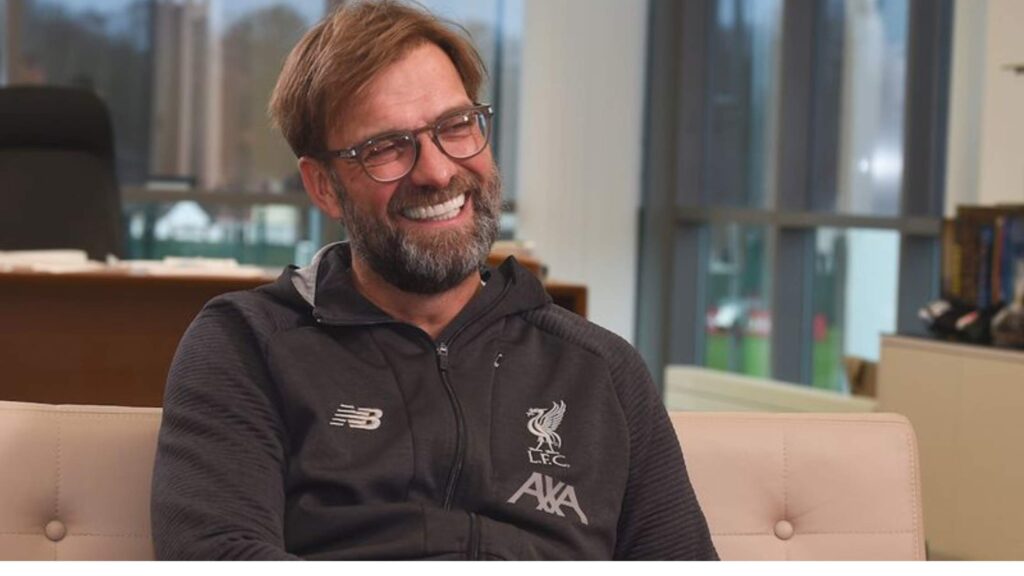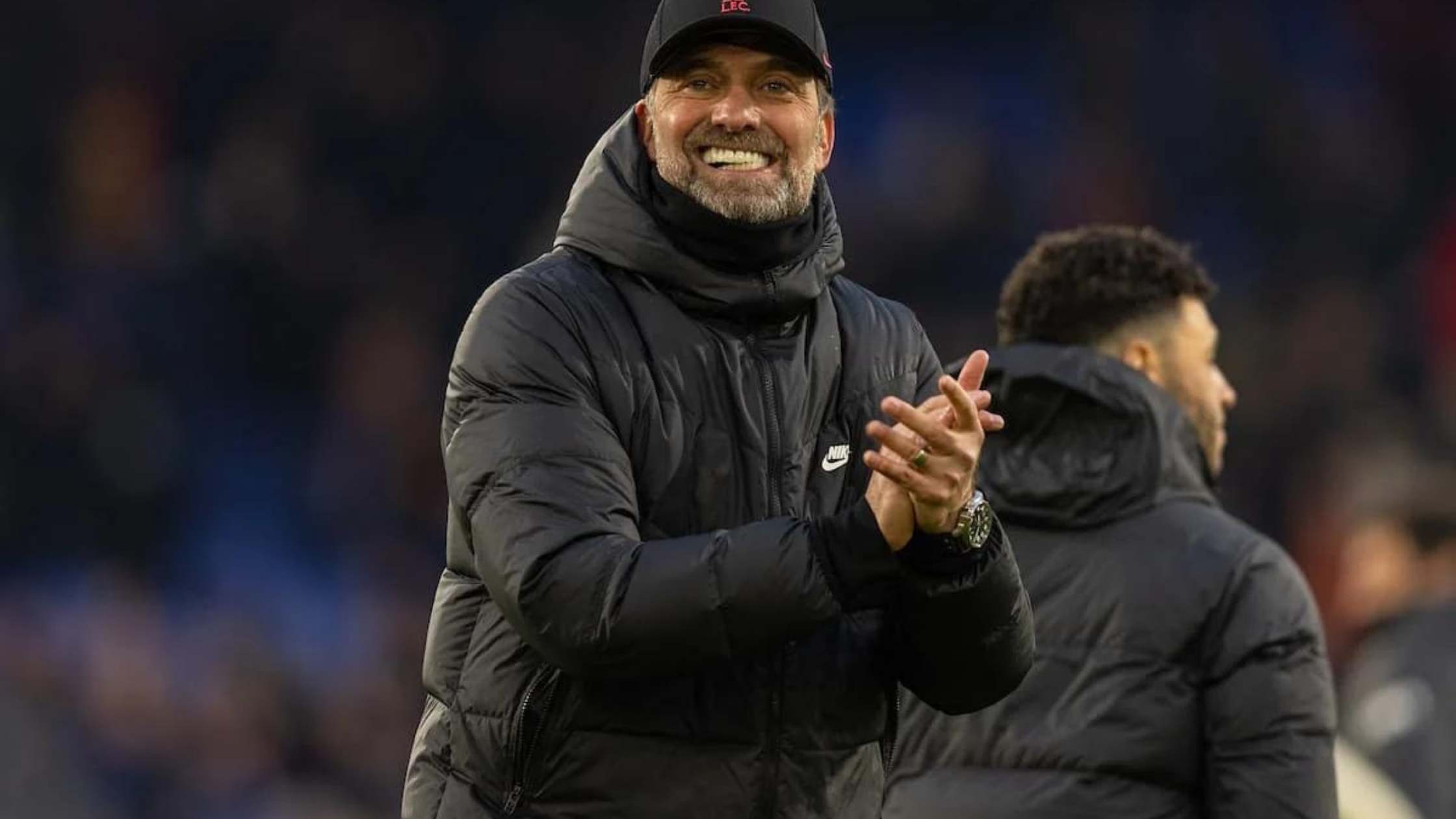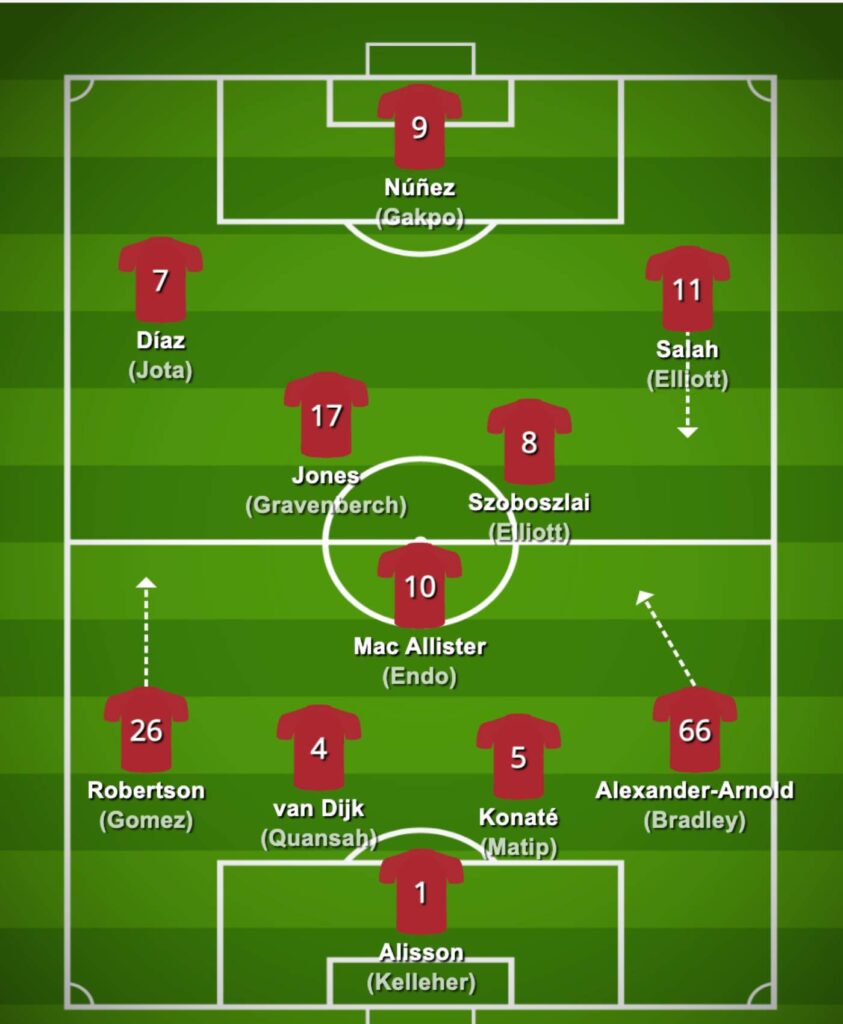Jurgen Klopp, a man whose tactics have greatly influenced the Premier League, has announced his departure from Liverpool and his potential retirement from football management at the end of the season. It’s been news that has shocked the football world.
Klopp not only put Liverpool back on the proverbial perch. He also created one of the most fun-to-watch and efficient teams in EPL history.
Liverpool is at the moment at a crossroads. It’s a visible change of the guard. New, young players have been brought in. Veteran players’ roles are reworked.
The German manager has used the 2023/2024 season to create a brand-new and highly competitive Liverpool side. This is why it’s time to look at the tactics Jurgen Klopp is using for the Reds this season.
Jurgen Klopp’s career prior to managing Liverpool
Jurgen Klopp’s story is nearly as famous as his managerial achievement. This story, along with his bigger-than-life persona, has made him one of the most popular figures in football.
Klopp was born in Stuttgart and fell in love from a young age. He spent his entire professional career playing for Mainz 05. Playing as a central defender, Klopp may not have achieved A-list status, but they became a local hero at Mainz.
His popularity meant that after retiring, he was offered the job of manager of Mainz 05. And, while as a player, Klopp never managed to take his team to the Bundesliga, he guided the team to the first tier as their manager. Mainz was a team that punched above its weight, and Klopp also became a successful television pundit.
In 2010, he was given the opportunity to manage Borussia Dortmund. Using an intelligent recruitment policy and tactics based on gegenpressing, Klopp led Dortmund to one of their most successful spells. During this time, the club won the Bundesliga twice and was runner-up in the Champions League after playing rivals Bayern Munchen in 2013.
After his decision to leave Dortmund, the charismatic manager was persuaded to join Liverpool in 2015. Klopp began a serious rebuild of the squad. In his first season, they reached the Europa League final. Later, they would win the Premier League and the Champions League and reach a couple more UCL finals.
Football Philosophy
In tactics terms, Jurgen Klopp’s name is nearly synonymous with gegenpressing. This style was popular in Germany during the 1980s. It requires teams to try and press aggressively and win back possession within seconds of losing the ball.
Klopp has famously called gegenpressing the best playmaker, as he believes that in the first few seconds of gaining possession, a team is most vulnerable to losing it and to quick turnarounds.
Klopp’s teams favour high-intensity, attacking football. It requires players to be fit and avoid injuries throughout the campaign.
All of this wouldn’t work unless Klopp were also a strong motivator. Known for his man-management, Klopp manages to get the best out of his players with remarkable consistency.
Tactics at Liverpool in 2024
Jurgen Klopp’s Liverpool tactics are world-famous. They helped practically revolutionize the Premier League and won The Reds trophies. But they are also well-known to opponents. Most importantly, this is a new Liverpool team that Jurgen Klopp is trying to usher in. This is why several important changes have needed to be made for the 2023/2024 season.
One of the main changes is the introduction of the box midfield shape, which we discussed previously on this site. This tactic usually involves using four midfielders, two attacking and two defensive-minded players, who play in a box shape.
One of the key reasons for implementing this change has to do with Trent Alexander-Arnold’s defensive vulnerability. However, when asked to tuck in and play, almost like a deep playmaker, few in modern football possess Alexander-Arnold’s attributes.
The system also helps utilize the passing abilities and energy of newcomers Dominik Szoboszlai and Alexis Mac Allister, together with the ever-dependable Curtis Jones.
However, this 4-2-2-2 formation makes teams that use this tactic vulnerable to attacks on the wings. Working requires the full-backs to pick the slack for the teammates. They will need to patrol the flanks and eliminate threats constantly.
Formations and adaptability
Jurgen Klopp’s teams are synonymous with the use of a 4-3-3 formation. In fact, during Liverpool’s recent glory days, every fan knew the attacking trio of Mohamed Salah, Sadio Mane and Roberto Firmino, and practically all the other starting players.
However, last season, Klopp opted to change the formation often. This is due to a perceived need to adapt to opponents and also to adapt to injuries or vulnerabilities.
In games, the 4-3-3 could easily shift, for example, to a 4-5-1 with Darwin Nunez acting as a “classic number 9.” There have also been instances of the team using a 4-4-2 diamond or even a 3-box midfield with a 3-2-5.
And, during this season, the team can still shift to any of those formations in various phases of play, regularly starting in a 4-3-3 shape.
Liverpool in defence
At the start of the season, one of the biggest talking points was about who would replace Fabinho as the team’s “number 6.” Fabinho is a defensive midfielder with excellent capacity to destroy the opposition’s attacks, to press at just the right times, and to use his physicality to his advantage.
The secret was that Liverpool didn’t need just one player for this. Several players stepped up. First, Alexis Mac Allister has confidently taken over the job. But he has interpreted the role differently. The World Cup winner is a more creative player who makes 85% of his passes. However, with 2.32 tackles on average per game and 1.6 blocks, he has sh0n capable of taking on the defensive role.
Furthermore, the tackling ability of Jones or Szboszlai, usually playing in a more advanced position, has saved the defenders from having to do more work than they should.
Naturally, Joe Gomez and, especially, Virgil van Dijk’s positioning, tackling and anticipation are helping the team remarkably. Ibrahima Konate has been a good backup to both of those players.
Finally, goalkeeper Alisson remains extremely dependable. He has a save percentage of 77% and has only conceded 16 goals in 20 matches. However, the fact that he has only had 66 shots against his target in 20 matches also says a lot about how well Liverpool’s press has worked this season.
How Liverpool build-up
Once more, this Liverpool team is one of the best in the world at retaining possession. Their attacks, however, are swift and involve the players, creating plenty of avenues to attack the opposition’s goal.
Build-up starts from the back. The Reds have some of the best ball-playing defenders in world football. Van Dijk, Konate, and Gomez all have above 80% pass success rate. Midfielders Szboszlai and Mac Allister enjoy similar numbers. And Curtis Jones has an astonishing 91% success rate.
Build-up often occurs on the right side of the pitch. As I mentioned, Trent Alexander-Arnold tends to move to the centre of the pitch. The space will be filled up by Salah dropping down to receive the ball. His movement will force markers to chase him. The Egyptian will then have options in the midfield (Szboszlai, Alexander-Arnold or Jones) to play a one-two pass and advance the ball.
Liverpool in attack
The key to Liverpool’s attacking is the responsibility each player is willing to take upon himself. Not only do most of The Reds’ players have great passing statistics. They make these passes from difficult positions and often after controlling the ball into advanced areas.
This means that the gegenpressing tactic must be utilized often. Liverpool’s attacks are quick and relentless, and if possession is lost, attempts to win it back must be the same.
Mohamed Salah remains the team’s biggest goal-scoring threat. He has managed 14 goals and 8 assists so far. Then again, Salah’s consistency singles him out as one of the best players in modern EPL history.
A lot has been made about the perceived inefficiency of Liverpool’s newer strikers, Darwin Nunez and Cody Gapko. This is not entirely accurate.
Nunez, in particular, is known to squander opportunities. However, his confidence in playing the number 9 role as a poacher has never wavered. He has registered more shots on target than any Liverpool player. And he has netted 7 goals and provided 7 assists.
Goals have also come from wingers Diogo Jota and Luis Diaz, two players who are not always chosen as starting players. As was the case in the past with Divock Origi, Klopp has the ability to make even substitute players deliver their very best when they have the opportunity to do so.
What next for Jurgen Klopp and Liverpool?
Jurgen Klopp has not only announced that he will leave at the season’s end. He has been quick to quench any rumours that he might decide to change his mind at the last minute or that he will interfere with choosing a replacement.
Klopp says he will take at least one year of sabbatical and never manage in the Premier League. His immense popularity in his native Germany means many supporters hope he will eventually coach the national team.
Speculation about who will replace Klopp as Liverpool’s manager is ripe. The club has announced that it is only now beginning its search, despite knowing the news as early as November 2023.
Xavi Alonso, a former Liverpool great and current manager of Bayer Leverkusen, is in pole position for the job. His style does not resemble Klopp’s, but to ignore his resume and recent success in the Bundesliga would be mad.
Brighton’s Roberto de Zerbi has also been mentioned around Anfield. Another manager that would fit Klopp’s heavy-metal attacking style would be PSV Eindhoven’s Peter Bosz. Graham Potter ought to be considered for the role as well.
















